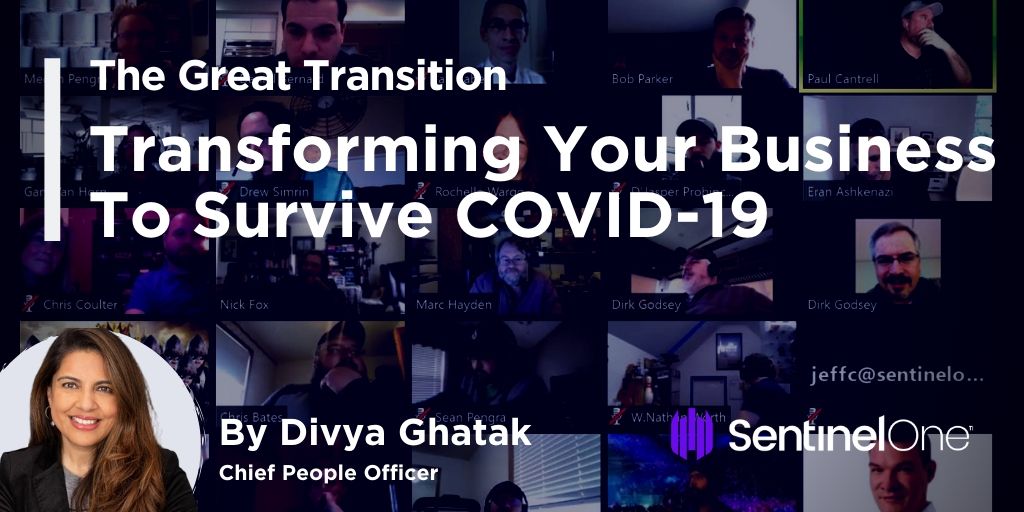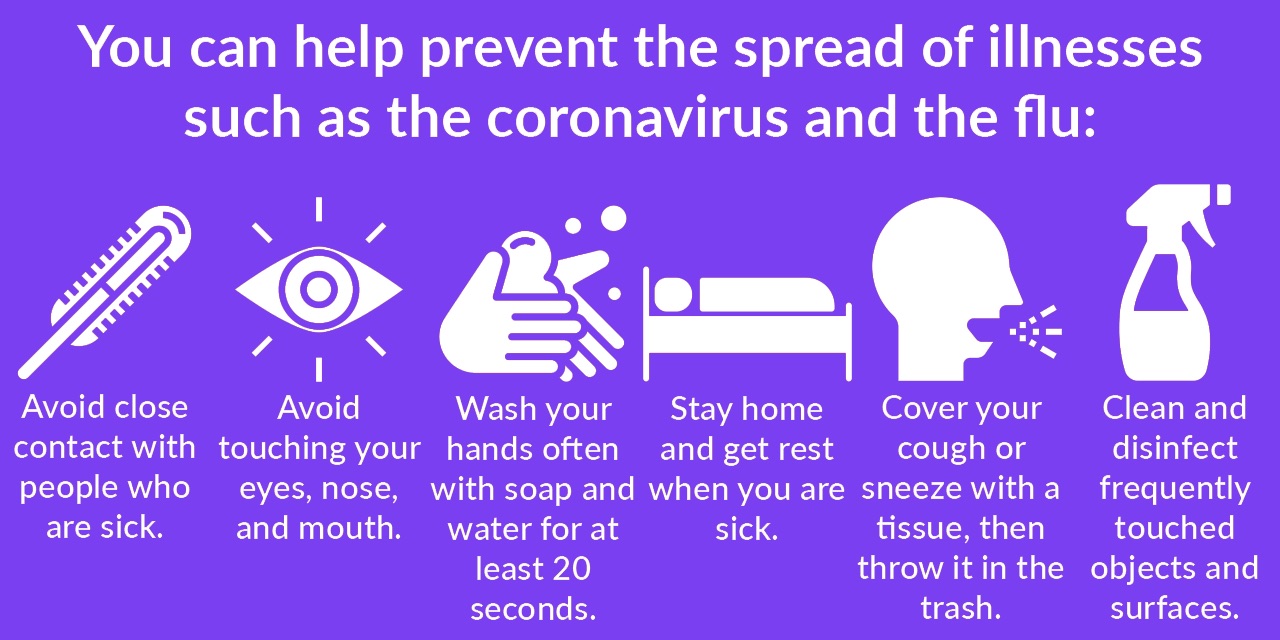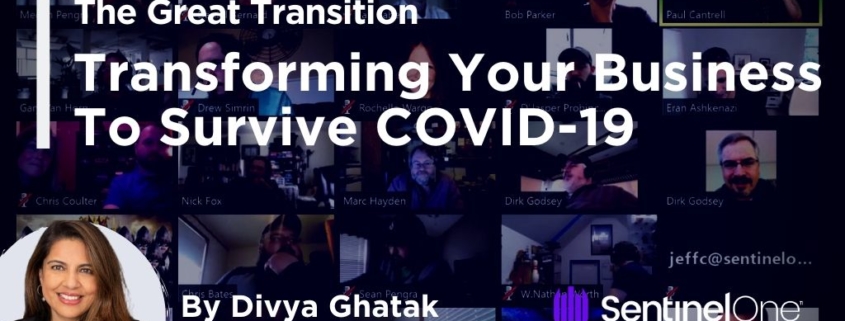The Great Transition: Transforming Your Business To Survive COVID-19
Look inwards to your company mission & culture to make the best decisions for your teams and customers in this crisis.
In a matter of just a few weeks, businesses around the world have begun to engage in the largest exercise in organizational change ever conducted, and at a pace that, like the Coronavirus pandemic that precipitated it, is entirely unprecedented. There are no textbooks, use cases or research studies on how to conduct such a rapid and fundamental transformation successfully. For all of us, everywhere, this is causing us to change on a continuous and real time basis.
Despite that, and despite the personal, professional, and organizational strains that this situation has rapidly thrust upon us, adhering to the same principles of effective leadership, organizational resilience, and human empathy that have brought success in the past will serve well here, too. This is no “quick win” strategy. It’s time to double-down on the core tenets of your organizational culture.
SentinelOne took an early and decisive approach to the emerging COVID-19 situation back in February. In this post, we will share some of the principles and best practices that have helped us to successfully navigate this sudden upheaval to our business, our clients, and our team members.

It’s the People That Matter
SentinelOne is, at heart, a people company. Our product is driven by people creating AI models and writing code. Our business is driven by social interactions between our teams and our customers. Getting to know our customers and their unique needs, whether it’s in their own workplaces or at conferences, small or large, and building relationships that last is central to what we do. The same principle underlies our approach to our people and our talent. Our people define our success, and the strength of our teams is built on open, inclusive communication that is fostered across all levels and regions and reflected throughout the organization. Shutting doors and social distancing is not in our DNA, so how have we managed the great Coronavirus transition?
Act Early, Act Decisively
Like many companies, particularly in the tech sector, we are not entirely new to the concept of remote work, but we believe that even for companies that have no experience of supporting a remote workforce, the challenges are really less about technology and more about culture and leadership.
As the likelihood of the Coronavirus becoming pandemic rose sharply during February 2020, SentinelOne began offering the early option for our teams to work from home well before formal public directives were issued. We also adjusted travel guidelines and implemented visitor and guest policies at all SentinelOne sites. By getting out ahead of the problem, we bought time to implement further changes along the way.
Wherever you are now in your journey, you can still get ahead of the game. Preempt the possibilities for where you could be and start your journey. Do not hedge between “best case” and “worst case” scenarios at this point, but act quickly to address the most essential needs of your teams and customers that you see in front of you. Taking this first step starts the journey and builds the path forward.
Foster Awareness & Empathy
Technological aspects aside, the shift to remote work may be challenging for many of your teams. It is crucial that leaders raise awareness of the reality of remote work and give managers and their teams the support they need.
Working from home for those not regularly doing it places many strains on your employees, from finding the right environment for effective work to juggling relationships and duties as partners, parents, teachers, and caregivers. We are all multi-tasking now, and we’re working in spaces that, unlike our purpose-built office spaces, were not designed for the job. Remote work blurs the boundaries between work and life at the best of times. With the restrictions and worries brought about by both the pandemic and working from home, this is even more true.
It’s not only important to recognize these challenges, but to communicate to your team members that you recognize them. Remind them that they are trusted and valued and acknowledge the unprecedented nature of the situation. At SentinelOne, we created a Work From Home Handbook providing essential tips to employees, and we maintain a Wiki with updated information and guidance on things like hand hygiene and WHO recommendations. We’ve also published posts, webinars, and other digital assets on best practices for working from home and using remote software securely.

Engaged Leadership & “Relentless” Communication
Frequent and authentic communication is ever more important as each day brings more uncertainty.
At SentinelOne, we prioritized this top-down, bottom-up, peer to peer as well as site/geo specific communication. Starting with frequent updates from our CEO and leadership team and All Hands, we also opened up several other channels. We set up Slack channels specific to COVID-related issues, resources, and news for every region that are being updated real time. It turned out to be a huge platform for team connection and communication: not only were we able to cascade policy and resource updates, but it also led to a huge outpouring as our teams shared their own news and updates and consulted with each other around the clock.
Our leaders and teams were already well-versed with using virtual communication tools like Zoom, but now they also use them to create virtual All Hands meetings, team “happy hours” and celebrations.
Our teams are using their innovative DNA to make this as live and as close to face-time interaction as possible. The latest in this is our virtual corridor called “S1 Living Room.” This virtual room is open all day and you can enter at any moment, drink coffee together, have a talk, connect on your hobbies, your pets or even join a Yoga class at scheduled times.
We set up a global cross-functional/cross-site COVID task force that meets every week to problem-solve in real time and pass on insights to the team managers, who connect often and share resources with their teams.
Therefore, there are a number of ways you can use your communication platform effectively. Create channels both by team but also by region and even local area, depending on the structure of your organization. As we are all isolated at home, it’s important to know what else is going on around us, and knowledge-sharing about local conditions – in both business and social spheres – is an important part of ensuring everyone stays connected, motivated and on top of their game. Physical distancing does not have to preclude social interaction!
Team Safety & Wellness
Awareness and empathy around the current situation needs to be backed up and reflected in company policies. At SentinelOne, we have realigned our family benefits, sick leave policies, disability and wellness benefits globally to prioritize the safety of our teams and to support the mass shift to working from home. We are always checking in with managers and standing by to support team members and their families if they get sick, such as by sending them care packages to show our support.
Also, we realized early by listening to our teams that one size does not fit all. For instance, our Tel Aviv site needed more support for families adapting to work from home via additional baby-sitting allowances, but our US and EMEA teams had other needs. This led us to set up a monthly team allowance for them that could be used for supporting family or wellness or home IT needs. Additionally, where we provided free lunches and snacks in our onsite kitchens and cafeterias, we now replaced that with reimbursement for food delivery.
In office spaces, there are regulations around things like ergonomics, work-to-break time intervals, and many other practices to ensure the health and safety of staff. As your people transition to remote work, they need help and support to take effective responsibility for these kinds of issues themselves. SentinelOne communicates this kind of information through wellness resources on our Slack channels and publishes resources to support physical wellness through providing live streaming of free classes and also providing resources to support mental and financial wellness.
Business Continuity
It’s vital in these uncertain times to ensure that you can continue to operate effectively, serve customers, and manage your data securely. Crucial Information Technology services must be prioritized, and as you transition teams to remote work, do so in the knowledge that the COVID-19 pandemic creates new vectors for threat actors to exploit.
The SentinelOne IT & Operations team began preparations a few weeks before we physically moved to work from home. We foresaw a shortage of computing resources and stocked up on laptops and other equipment beforehand. We also allowed staff to take home any necessary equipment such as monitors, chairs, and keyboards that would facilitate the transition to working from home.
Update your teams on safety and security procedures, and deploy endpoint security software on all business machines. All SentinelOne company computers are remotely administered and protected by a variety of tools, including our own endpoint security platform. It’s also important to ensure that all computers are updated to the latest versions of operating systems and software, and that all employees have appropriate licenses for the software they need to continue working.
Ensure teams are using an appropriate and secure VPN when connecting to corporate assets, and increase the visibility of your IT and Security teams so that staff feel confident to approach them if they have concerns.
Beyond ensuring the delivery of critical business infrastructure, consider revisiting your product/business roadmap. What is most crucial in the current crisis? What can you confidently execute on and deliver to customers? Where you have to make changes that affect earlier market promises, communicate those to customers early and transparently. Form tiger teams to address projects that face significant obstacles but which must still be delivered.
Looking Ahead
There is no doubt that the COVID-19 pandemic is, and will continue to be, a major challenge for organizations throughout 2020 and perhaps even beyond. In order to address the problems presented by this crisis, it’s crucial to act early and decisively, ensure teams are informed and equipped to work effectively, and that you lead from the front. At SentinelOne, we are confident in the knowledge that our people, our culture, and our organizational practices will steer us through these turbulent times. We hope this post has provided some ideas that you can successfully adopt that will help your organization, too. This pandemic will pass, and we all need not only to navigate safely through the choppy waters of today but also to envision and plan for the things to come in the post-COVID-19 world.
We look forward to seeing you on the other side, with your teams healthy and your business in good shape!
Like this article? Follow us on LinkedIn, Twitter, YouTube or Facebook to see the content we post.
Read more about Cyber Security
- How Will Cybercriminals Take Advantage of AI in the Future?
- Is SearchMine Adware Teeing Up Your Endpoints For Other Threat Actors?
- Working From Home | How to Use Zoom, Slack and Other Remote Software Safely
- Looking on the Bright Side of Coronavirus: Impact on Low-to-Mid-Tier Criminals and Vendors
- Enterprise Employees | 11 Things You Should Never Do at Work (or Home)
- COVID-19 Outbreak | Defending Against the Psychology of Fear, Uncertainty and Doubt
- COVID-19 Outbreak | Employees Working from Home? It’s Time to Prepare



Leave a Reply
Want to join the discussion?Feel free to contribute!